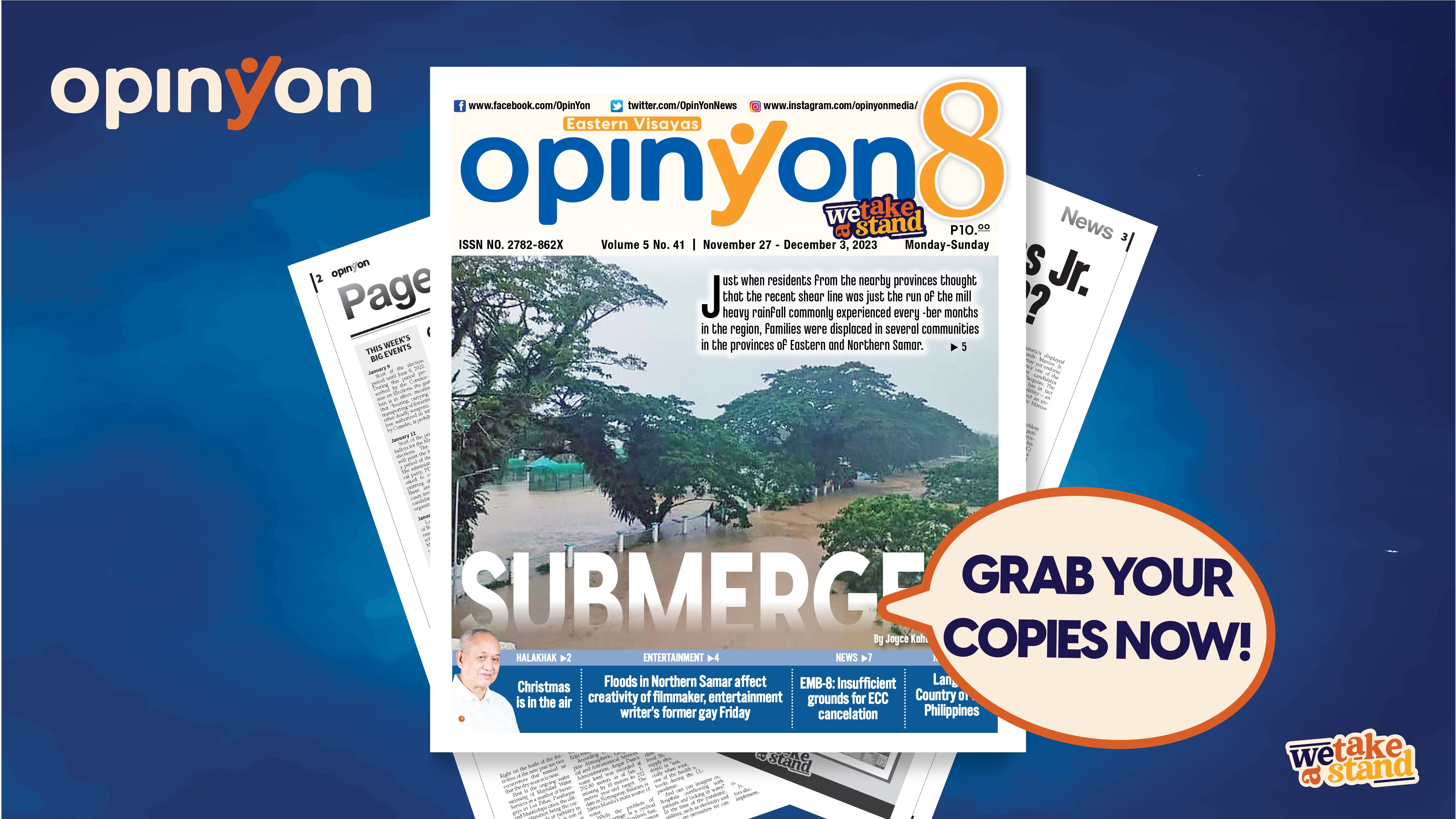Just when residents from the nearby provinces thought that the recent shear line was just the run of the mill heavy rainfall commonly experienced every -ber months in the region, families were displaced in several communities in the provinces of Eastern and Northern Samar.
While Leyte was already experiencing a fairly good weather, incessant rainfall was still being experienced particularly in the Northern Samar communities of Catarman, Catubig, Gamay, Lapinig, Las Navas, Lope de Vega, Mapanas, Mondragon, Pambujan, Rosario, San Roque, Victoria, Lavezares, Palapag, Laoang and Bobon. Northern Samar islands of Biri and Capul were likewise not spared from the severe flooding.
Meanwhile, all 13 villages of Jipapad in Eastern Samar were likewise swamped with floodwaters since the morning of November 20. As of the latest reports, 2,715 families or 9,913 individuals were affected in Jipapad alone.
Due to this, Northern Samar Governor Edwin Ongchuan and Eastern Samar Governor Ben Evardone declared both of their provinces under the state of calamity. As of the latest reports from the National Disaster Risk Reduction and Management Council (NDRRMC), 54 barangays in Eastern Samar, 28 in Samar, 18 in Northern Samar, nine in Biliran and one in Southern Leyte were submerged in floodwaters.
While the floods in Biliran and Southern Leyte begin to subside as quickly as they came, residents in the affected areas in the islands of Samar can barely check what was left, if there are still any left from their homes. With the flood waters washing away the homes made of light materials and even almost reaching the top of an 8 feet tall wall surrounding a property, many were forced to seek refuge in the sturdy homes of their well-off neighbors.
Several incidents of landslide were also monitored by the Department of Public Works and Highways 16 road sections and three bridges were affected. Nine houses were damaged in Southern Leyte and Samar. DPWH Eastern Samar public information officer Eson Gachalian said a national road in Barangay Bigo in Arteche was rendered impassable to all types of vehicles due to flooding. A portion of the road in Barangay Cag-Aguingay in Lope de Vega, Northern Samar was closed due to a landslide.
“We have been regularly issuing advisories to inform the public about road closures and the alternative routes to their destinations,” DPWH-Eastern Visayas regional director Edgard Tabacon said.
NDRRMC said that they were able to record a total of 14,775 families or 57,606 people affected in Samar and Leyte. The national government had to allocate more than P1.4 million in food packs to affected families.
Meanwhile, the Philippine Coast Guard (PCG) had been continuously conducting rescue operations to save stranded residents. PCG substation in Biri, Northern Samar also implemented the forced evacuation of residents in flooded areas in Barangays Poblacion and Progress in coordination with the municipal disaster risk reduction and management office.
“Authorities are actively working to determine the exact number of individuals or households that have undergone forced evacuation in specified barangays. This information will be crucial for effectively addressing the needs of the evacuated residents,” the PCG-Eastern Visayas office said.
As of this writing, several affected areas are still underwater as occasional rain continues to batter the communities. More than the damage inflicted, Samarnons can only hope for the weather to get better and for them to be able to return and rebuild what was left of their homes soon.
Stating the obvious
The severe flooding on Samar Island had also raised several questions like its correlation to the mining and illegal logging in the area. Both activities can significantly impact the region's susceptibility to flooding through various mechanisms.
Illegal logging contributes to deforestation, which reduces the capacity of forests to absorb rainwater.
This can lead to increased surface runoff and soil erosion, elevating the risk of flooding during heavy rainfall. Meanwhile, mining activities and illegal logging can result in soil erosion, leading to sedimentation in rivers and streams. This reduces the water-carrying capacity of waterways and can contribute to flooding. It can disrupt natural drainage patterns and alter the landscape, potentially impeding the natural flow of water. This disruption can lead to changes in water flow patterns.
Both illegal logging and mining can disrupt ecosystems and reduce the natural capacity of the environment to mitigate flooding through processes such as water absorption and retention.
It's important to address these issues through comprehensive environmental management, including the enforcement of regulations to combat illegal logging and mining, reforestation efforts to restore vegetative cover, and sustainable land use practices to mitigate the impact of these activities on the region's vulnerability to flooding.
However, for the island whose officials refuse to acknowledge the problem in the guise of employment opportunities and economic value, it might still be a long time before the locals receive climate justice.
Opinyon 8 had reached out to the local government unit of Homonhon where three mining companies had already started taking over the island. As of this writing, the LGU is yet to answer questions.
#OpinYon8 #OY8 #CoverStory #Submerged #Samar #EdwinOngchuan #BenEvardone #NDRRMC #Landslide #DPWH #PCG #CoastGuard #IllegalLogging #Mining #Deforestation #Homonhon #OpinYon #WeTakeAStand
